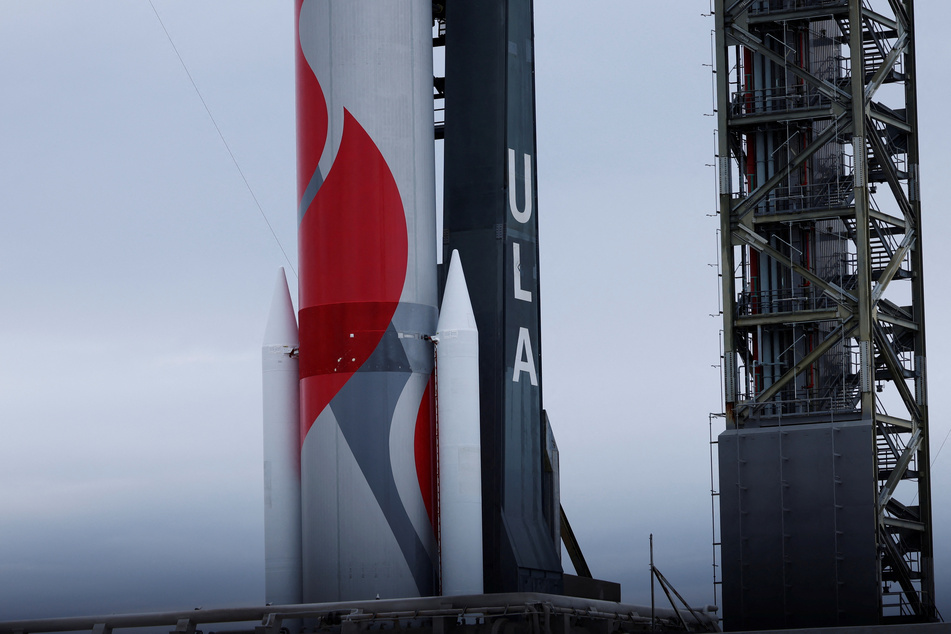US lunar lander mission faces failure after "critical loss of propellant"
Cape Canaveral, Florida - The first American spacecraft to attempt to land on the Moon in more than half a century blasted off early Monday, but ran into trouble due to a technical problem.

A brand-new rocket, United Launch Alliance's Vulcan Centaur, lifted off from Cape Canaveral Space Force Station at 2:18 AM for its maiden voyage, carrying Astrobotic's Peregrine Lunar Lander.
"Successful #VulcanRocket staging, ignition," ULA said on X, formerly Twitter, following the launch.
Eric Monda, ULA's strategic planning director, described the launch as "spot on."
"It was so cool. I ran outside to watch the launch," he said on NASA's live stream.
If all goes to plan, Peregrine will touch down on a mid-latitude region of the Moon called Sinus Viscositatis, or Bay of Stickiness, on February 23.
"Leading America back to the surface of the Moon for the first time since Apollo is a momentous honor," Astrobotic's CEO John Thornton said ahead of the launch.
Until now, a soft landing on Earth's nearest celestial neighbor has only been accomplished by a handful of national space agencies: the Soviet Union was first, in 1966, followed by the United States, which is still the only country to put people on the Moon.
China has successfully landed three times over the past decade, while India was the most recent to achieve the feat on its second attempt, last year.
Now, the US is turning to the commercial sector to stimulate a broader lunar economy and ship its own hardware at a fraction of the cost, under the Commercial Lunar Payload Services (CLPS) program.
A challenging task

NASA paid Astrobotic more than $100 million for the task, while another contracted company, Houston-based Intuitive Machines, is looking to launch in February and land near the south pole.
"We think that it's going to allow... more cost effective and more rapidly accomplished trips to the lunar surface to prepare for Artemis," said Joel Kearns, the US space agency's deputy associate administrator for exploration.
Artemis is the NASA-led program to return astronauts to the Moon later this decade, in preparation for future missions to Mars.
Controlled touchdown on the Moon is a challenging undertaking, with roughly half of all attempts ending in failure. Absent an atmosphere that would allow the use of parachutes, a spacecraft must navigate through treacherous terrain using only its thrusters to slow descent.
Private missions by Israel and Japan, as well as a recent attempt by the Russian space agency, have all ended in failure – though the Japanese Space Agency is targeting mid-January for the touchdown of its SLIM lander launched last September.
Making matters more fraught is the fact that it is the first launch for ULA's Vulcan, although the company claims a 100 percent success rate in more than 150 prior launches.
ULA's new rocket is planned to have reusable first stage booster engines, which the company, a joint venture between Lockheed Martin and Boeing, expects will help save costs.
Science instruments, human remains
On board Peregrine is a suite of scientific instruments that will probe radiation and surface composition, helping to pave the way for the return of astronauts.
But it also contains more colorful cargo, including a shoebox-sized rover built by Carnegie Mellon University, a physical Bitcoin, and, controversially, cremated remains and DNA, including those of Star Trek creator Gene Roddenberry, legendary sci-fi author and scientist Arthur C. Clarke, and a dog.
The Navajo Nation, America's largest Indigenous tribe, has said sending this cargo to the Moon desecrates something that is sacred to their culture. Though they were granted a last-ditch meeting with White House, NASA and other officials, their objections failed to remove the cargo.
The Vulcan rocket's upper stage, which will circle the Sun after it deploys the lander, is meanwhile carrying more late cast members of Star Trek, as well as hair samples of presidents George Washington, Dwight D. Eisenhower, and John F. Kennedy.
UPDATE, January 8, 1:30 PM ET: Lunar mission under threat
Astrobotic's historic lunar mission is facing potential failure due to technical malfunctions.
Teams at ground control found they were unable to correctly point the unmanned Peregrine Lunar Lander at the Sun, which is necessary for its top-mounted solar panel to achieve maximum power generation.
In its latest update, Astrobotic tweeted: "The team believes that the likely cause of the unstable sun-pointing is a propulsion anomaly that, if proven true, threatens the ability of the spacecraft to soft land on the Moon."
The company added Peregrine is currently in an expected communication blackout, and it would provide further updates once contact is re-established.
UPDATE, January 8, 3:13 PM ET: NASA Administrator praises Vulcan rocket despite failure
Though engineers found a way to tilt the spacecraft in the right direction thanks to an "improvised maneuver," the company then posted on X that the same propulsion failure appeared to be the cause of a "critical loss of propellant."
"We are currently assessing what alternative mission profiles may be feasible at this time," Astrobotic said, an apparent admission that the Peregrine would not achieve a controlled touchdown on the Moon as planned.
NASA Administrator Bill Nelson praised the success of ULA's Vulcan rocket on its maiden flight, which maintained the company's 100 percent success rate in more than 150 launches.
"Spaceflight is a daring adventure, and @astrobotic is making progress for CLPS deliveries and Artemis. @NASA will continue to expand our reach in the cosmos with our commercial partners," Nelson said on X.
Cover photo: REUTERS